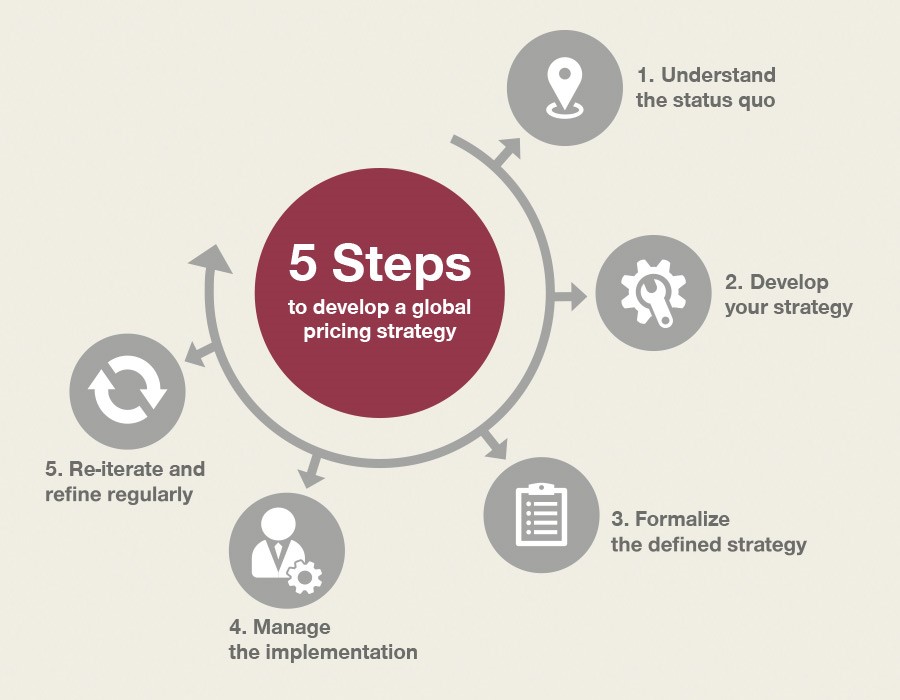Whether you are talking about net revenue management or revenue growth management, the goal is always the same: profitable growth. Effective net revenue management can have a big impact on sales and profits. However, many consumer health companies risk missing out on their true profit potential due to their incomplete approach regarding this topic. In this five-part series, industry experts take a look at the different elements of a holistic strategy. First, let’s talk about pricing.
Consumer healthcare (CHC) is a volatile market: Consumer needs, product lifecycles, and competitive structures in different market environments make it difficult to ensure sufficient profit and revenue growth especially for companies with a global presence. In order to stay ahead of the curve, companies need to remain consistent in their global brand strategy. One integral part of this is a globally coherent pricing strategy. Since globalization and digitalization enable consumers to compare product prices across different channels and sometimes even markets, maintaining a globally consistent price positioning has become more important than ever. Additionally, a consistent pricing strategy ensures effectiveness and efficiency across a company’s global marketing and sales organizations and provides guidance when launching new products. A win-win situation: Having a consistent strategy in place guarantees clear direction internally and logically consistent value communication to the consumer so that global brands can withstand both global and local pressures.
3 key elements of an effective pricing strategy
|
5 steps to develop a global pricing strategy
During countless projects with global consumer healthcare companies, we identify five key steps when mapping out a successful global pricing strategy:

1. Understand the status quo: Understanding your current positioning (e.g., value vs premium brand) and pricing strategy will be invaluable for decision making when developing the new global pricing strategy. Are your value-priced products designed for market penetration, while your premium-priced products are meant for skimming the customer segment with high willingness-to-pay? Given the current market and strategic dynamics: What are feasible goals for price positioning or profit? Are you a value brand trying to take price? Are you trying to defend against private label? Are you a premium brand trying to unlock additional demand? Mapping out the current situation is important to ensure that your new strategy is manageable in relation to the status quo so that a realistic roadmap can be created.
2. Develop your strategy: To map out how pricing should be done in the future, you need to start by defining certain guiding principles to act as guardrails for your strategy. What are your strategic objectives (e.g., increase basket value, improve trial rates, improve market share)? What is the desired positioning (e.g., value vs premium) on a brand level? And how should the relative pricing of products within a brand be determined? When developing your strategy, do not lose sight of the strategy’s most important addressees: the end consumer and your trade partners. Understanding how end consumers and trade partners will perceive your new strategy is key to mitigating any negative disruption that can occur and achieving success.
3. Formalize the defined strategy: As soon as you have defined your strategy, you need to formalize it in a company document to really make it stick. Clear, consistent, and actionable guidelines in the form of, for example, a playbook or blueprint increase the commitment of every company employee towards it. Another key aspect to ensuring follow-through with the new strategy is to establish KPIs that will be used to track progress and signal for adjustments. Having the right KPIs are key! For example, if your pricing strategy’s objective is to increase margins, then margins are likely the best KPIs to track. In this case, measuring sales volumes, which can incentivize price lowering and counter the margin objectives, can become detrimental to the established strategy.
4. Manage the implementation: Well-conceived change management ensures a smooth transition from the previous pricing strategy towards the new or revised strategy. Both internal and external measures have to be planned and executed: To get all relevant stakeholders on board you must appoint “pricing strategy ambassadors”. These stakeholders will not only be in charge of facilitating the new strategy changes, but are also a key source of information for team members that are responsible for executing these changes. These ambassadors should work with local team members to get information on concerns, talk through these concerns, provide suggestions for how to adjust the strategy within the bounds of these constraints, and escalate issues as needed. Implementation should also take place in steps, starting with one brand in one country to pilot the changes, track the relevant KPIs, and demonstrate the positive impact. This will be key to convincing the various parts of the organization to adopt the changes. You should also communicate the new guidelines to your trade partners and implement changes if necessary. If communication of changes to consumers are required, be sure to do so with caution.
5. Re-iterate and refine regularly: After all of these steps keep in mind that no strategy should be set in stone. Major market events (e.g., new market entrants, competitive launches) or internal events (e.g., new product launch, strategic direction change) can impact your pricing strategy, so you may need to start the process anew to keep up with altering market conditions or business strategy changes. These revisions are key to ensure the defined strategy is still compatible with your business objectives as well as market realities.
Success factors: flexibility, implementation, and the right marketing mix
Even though the described process sounds complex, costly, and time-consuming – don’t get discouraged. In our project experience, we detected three factors that enable success:
- Regardless of the final pricing strategy developed, it definitely needs to be dynamic and flexible enough to account for nuances among markets and potential changes in internal strategy. Also, it has to be clear enough to provide practical guidance – finding this sweet spot is not easy, but achievable. For example, one product benefit may be perceived as very valuable in Market A, but only marginally valuable in Market B. The pricing strategy needs to not only have flexibility to allow full value capture in Market A, but also prevent overpricing in Market B.
- What good does the perfect strategy do if it’s not implemented properly? For many companies, it is a big step to define a strategy and an even bigger step to live it and implement it with trade partners and customers. Effective change management is key: You need to define and establish structures, processes, roles/responsibilities, and monitoring metrics at the right management levels to keep momentum and turn the strategy into a process.
- Your pricing strategy needs to be aligned with and incorporated into the rest of your marketing mix, which includes the other four levels of net revenue management. For example, discounting a premium offering to a price below a base offering can lead consumers to perceive the base offering as overpriced, thus training them to wait for the premium offering to go on sale. Having a phenomenal price strategy is useless if the promotion strategy miscommunicates the intended price positioning.
While developing an entire global pricing strategy can seem daunting, following these five steps, and being cognizant of the key success factors, can provide the foundation for a long-term pricing strategy focused on profitable growth.








